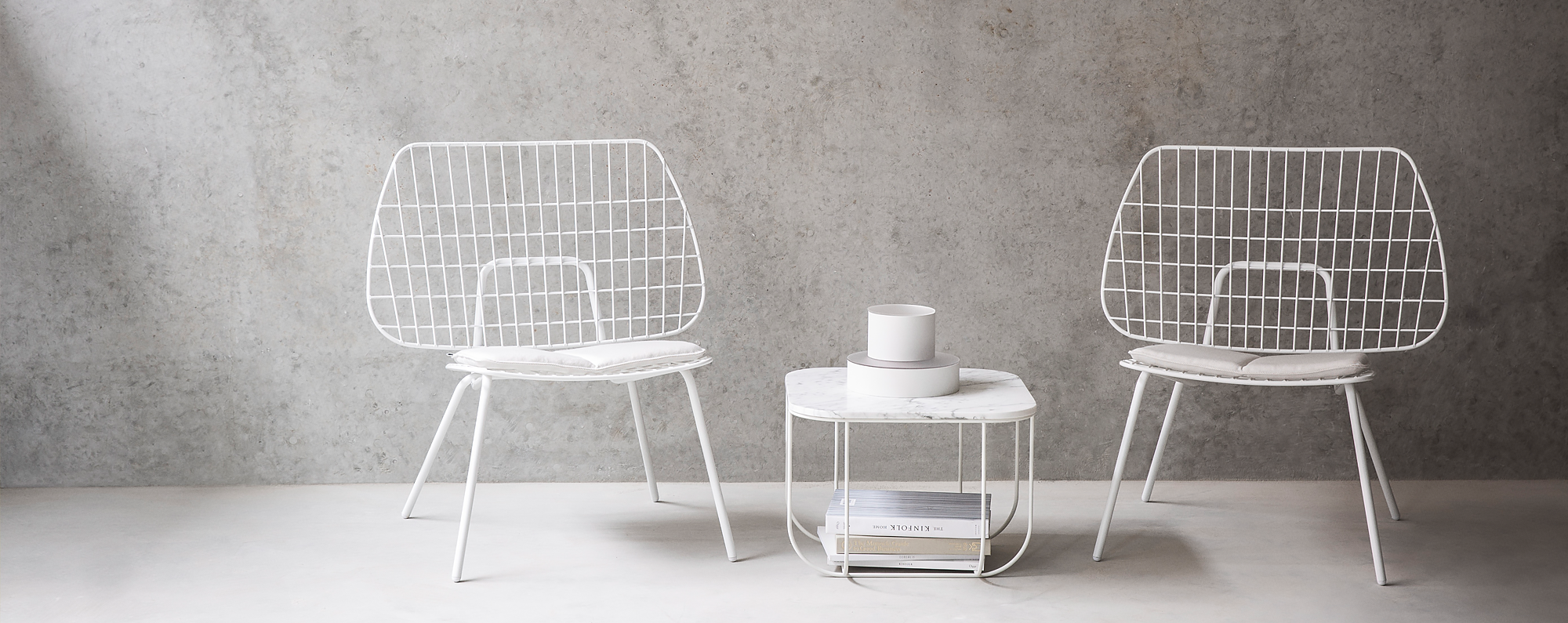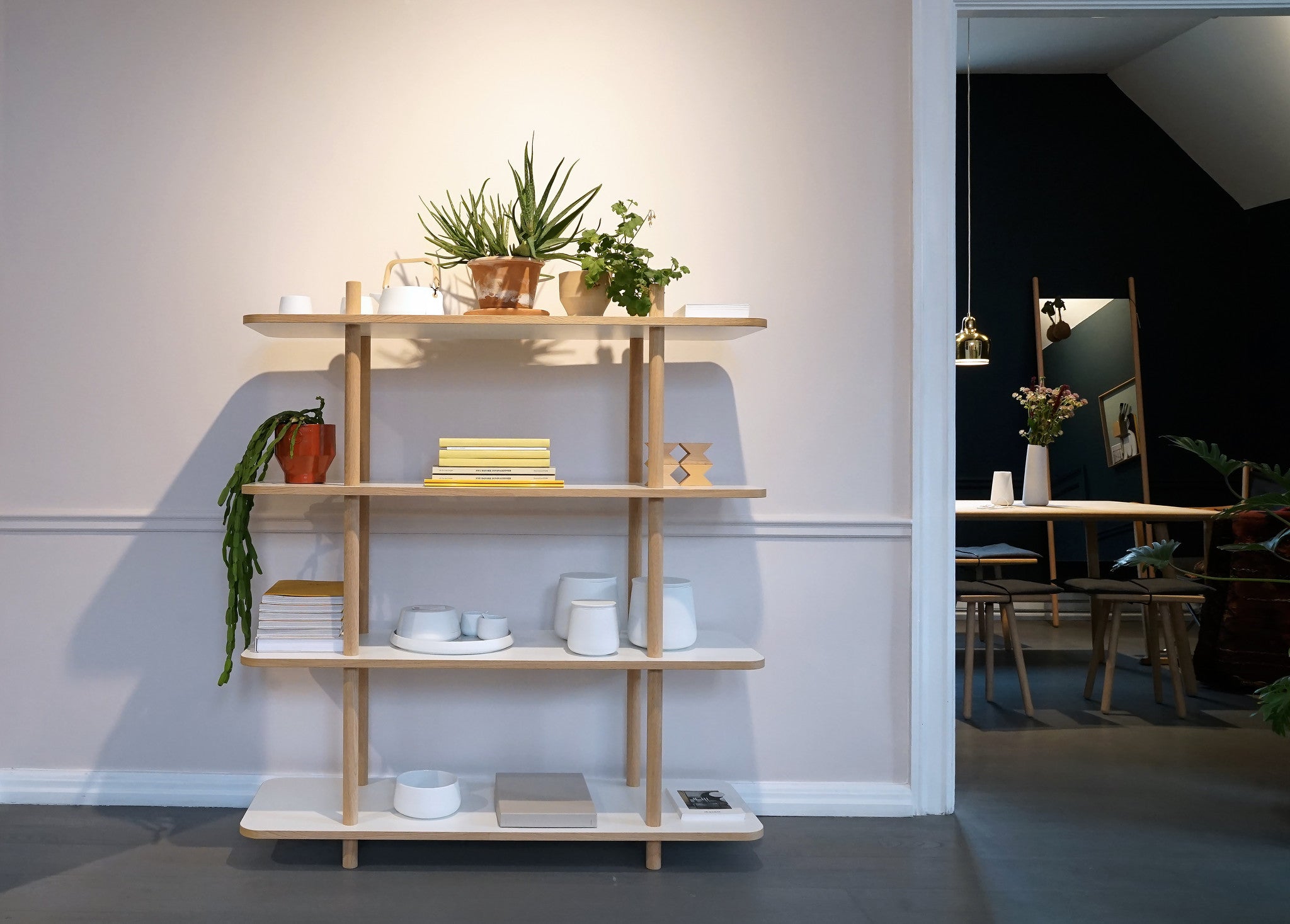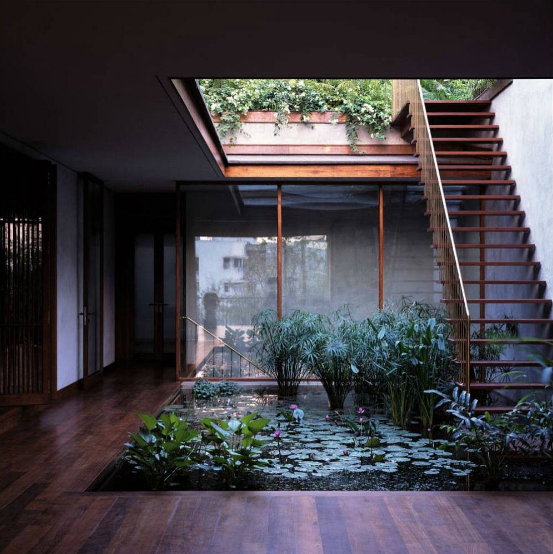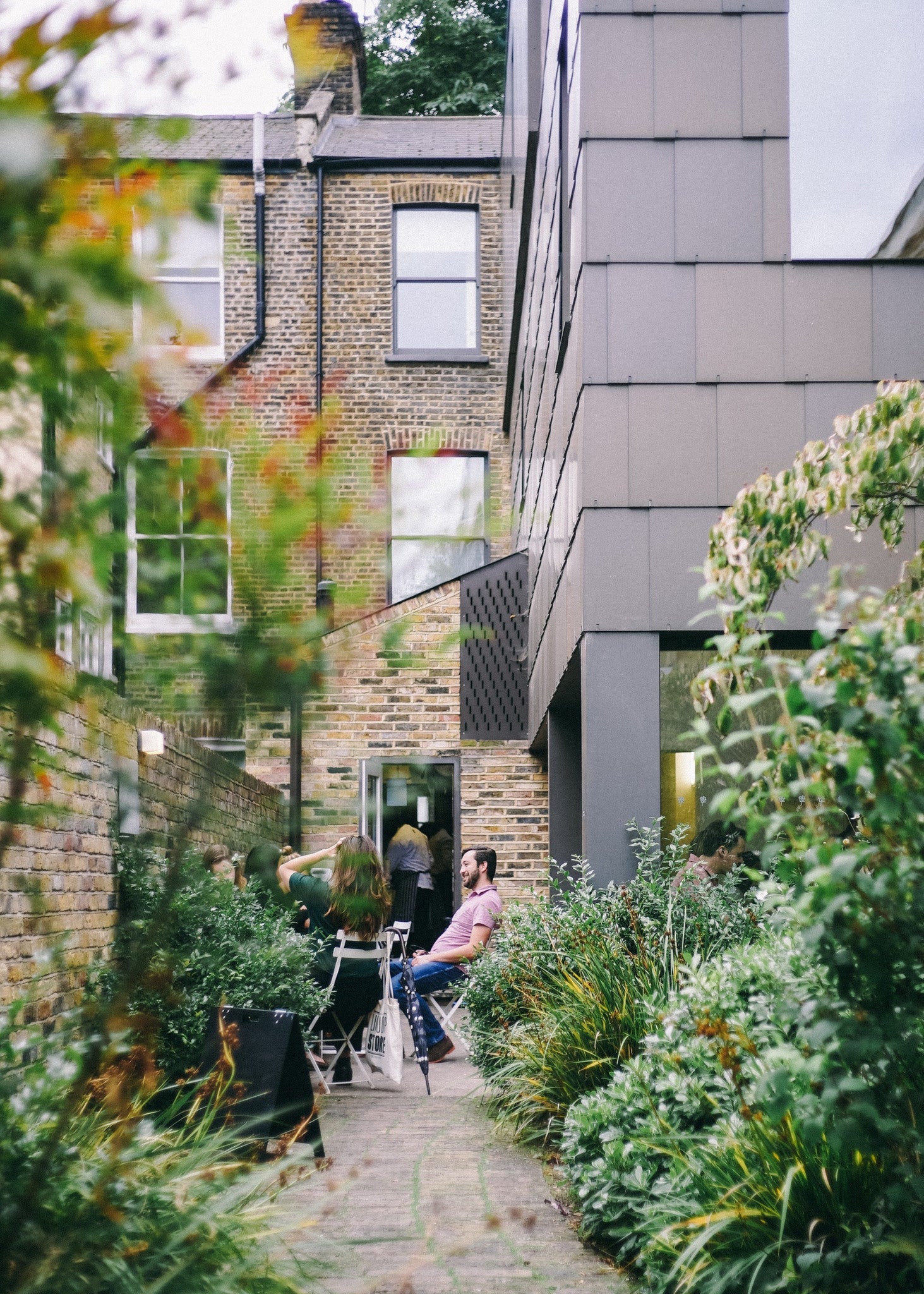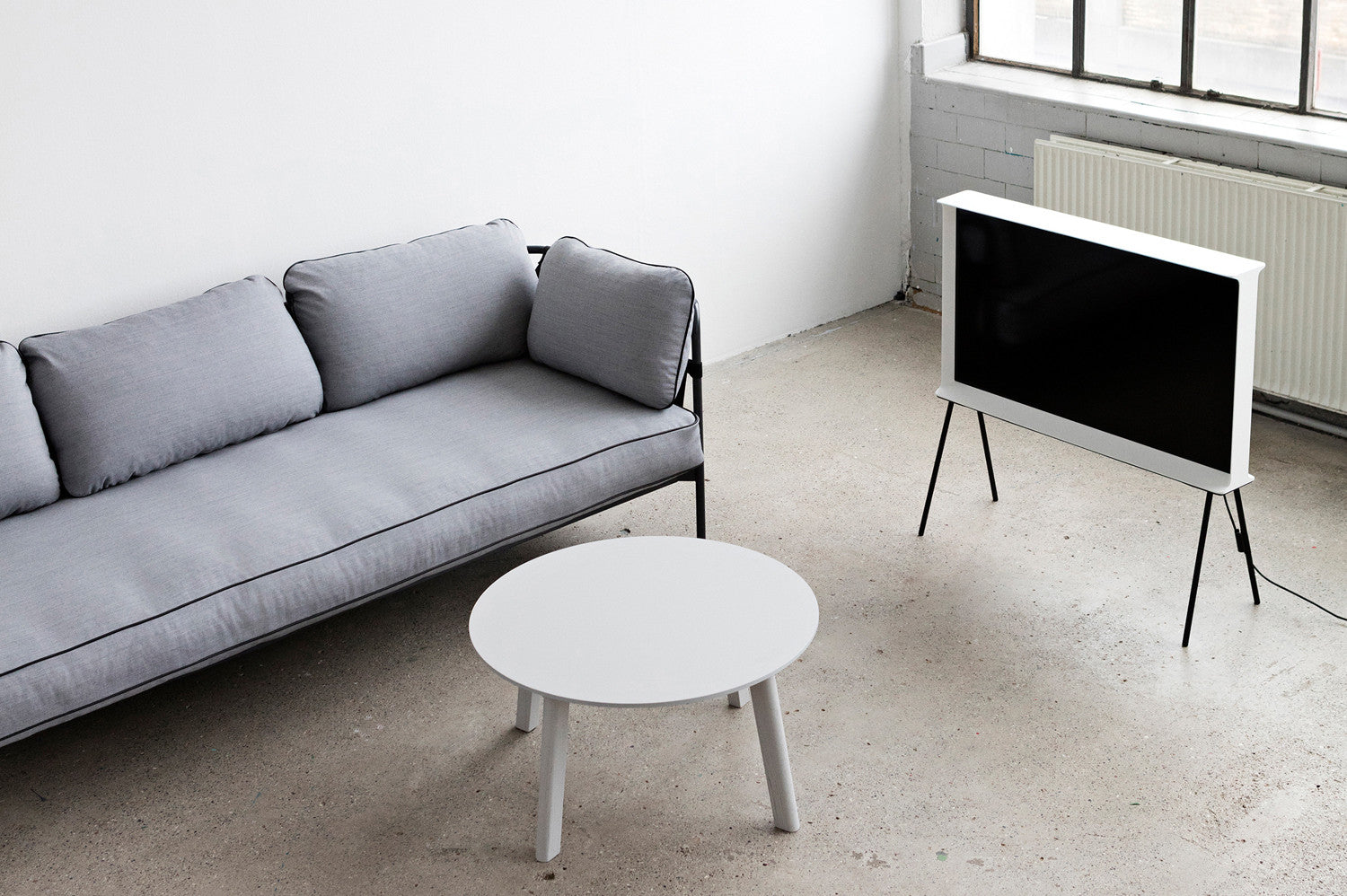In the late 1980's and 1990's minimalism was primarily a trend for perfect white spaces, devoid of signs of living and superfluous decorations. Likened to living in an art gallery, it was a clean-lined aesthetic that was almost unachievable and not much fun to inhabit if indeed you did manage it.
Today's minimalism is led by an idea most present in Japanese society - a philosophy to think carefully about what we surround ourselves with. It is generally accepted in Japan that an organised home, directly influences wellness - a clean uncluttered living space, will give the mind space to breathe.
This way of thinking doesn't necessarily mean that you don't have or hide belongings, rather that most have a purpose and each is a long term investment - free from passing fashion trends that may date them. It's a 'buy once' mentality that stands in stark contrast to the throwaway culture that still exists in many other parts of our lives.
So with this in mind what are we buying and why? Well, we all have our own individualistic tastes, so it's not possible to say what exactly we are buying, but there are some developing threads and environmental/cultural advances that are certainly guiding us...
In this all-digital age, technology is reducing the space we need in our homes for storage. Gone are the endless collections of CD's DVD's, photo albums and even books to an extent. In a way though it has already reached a saturation point, which is ironically driving an appreciation of the analogue. Screen-based media can be appealing in it's own right but it will never replicate the tactility and smell of a hardback book; it's paper texture, embossings and individual personality. Ultimately digital advances may be reducing the amount of these items we own, but it is also improving their quality. Book publishers now work harder than ever to create a beautiful product which results in a creation that demands to be displayed. This newfound desire for tactile objects also reflects a growing concern for sustainability Mass-production has brought us democratic design, and should be applauded for doing so, but unscrupulous manufacturers have also hidden detrimental processing practices alongside it. Producing low-cost furniture often exploits both workers and the environment simultaneously. With a well made product in created in a lower volume, the buyer can also purchase a unique story of care, values and longevity that can be shared with the next generation.
Aside from a controlled colour palette, the easiest way to assist a room's sense of calm and serenity, is by investing in a family of products. People now often buy into a particular range and continue to build on it as their needs require and budgets allow.
Take for example the 'Georg' range of furniture from Skagerak - Every piece in the family is based around a cylinder or dowel, used to create legs, rails or edges. The repetition of the soft forms in either untreated or black oak embodies a natural presence. A common link between each piece acts in the same way that a white space does in a gallery; without so many distractions each item's narrative is clearer. This styling approach reduces visual noise to a minimum and allows the contents of the room to come to the fore instead.
With increasing numbers of us living in urban environments, another recent trend has been for us to seek some reconnection with nature - a direction that is well established in Japanese culture. An urban wall, whether concrete, brick, painted, external or internal can be incredibly bleak. The organic shape and vivid green colour of a plant instantly diffuses the hardness of a wall, providing the best possible contrast. No matter whether we have a small garden, a balcony or even no outdoor space at all, a relationship with greenery is always possible and accessible. The use of plants by city dwellers to soften the rectilinear forms of minimalism is now one of the most engaging topics on social media. Green-thumbed Instagram communities like @urbanjungleblog have grown to inspire over 300K people everyday with their feed. If surrounded by nature, even the sparsest interior is invigorated.
Our definition of Luxury has also changed over the years. Although it still can, luxury doesn't necessarily mean opulence or grandeur. It is something that is shaped by individual circumstances and is intrinsically personal. The home can be a retreat from the hectic pace of life outside and the simple indulgence of peace and quiet can feel luxurious.
Danish brand Menu have been particularly adept at linking minimalism with luxury. Their material palettes of natural stone and polished metals are paired with sophisticated modern forms, to create an aesthetic that has seldom been seen before. Somehow they have been able to create a collection of new products over the past few years, which washes away the fear that all we designers have - whether a new design brings anything significantly new or enough of an improvement over what has gone before. Products like the Echasse Vase by Theresa Arns, for example, takes something traditional in form but reinvents it with something is as elementary as scale.
It is promising to see this 'New Minimalism' is now gradually gaining momentum in the UK and we hope that it will bring positive changes to how we live, beyond simply how things look. As industrial designer Naoto Fukasawa deftly explains; "The body is more happy when we are choosing the right things". For our part, we are always searching for the best new design, to make that 'right thing' a little bit easier for you to find.
Shop New Minimalism
Further reading:
Dominique Loreau
In the late 1980's and 1990's minimalism was primarily a trend for perfect white spaces, devoid of signs of living and superfluous decorations. Likened to living in an art gallery, it was a clean-lined aesthetic that was almost unachievable and not much fun to inhabit if indeed you did manage it.
Today's minimalism is led by an idea most present in Japanese society - a philosophy to think carefully about what we surround ourselves with. It is generally accepted in Japan that an organised home, directly influences wellness - a clean uncluttered living space, will give the mind space to breathe.
This way of thinking doesn't necessarily mean that you don't have or hide belongings, rather that most have a purpose and each is a long term investment - free from passing fashion trends that may date them. It's a 'buy once' mentality that stands in stark contrast to the throwaway culture that still exists in many other parts of our lives.
So with this in mind what are we buying and why? Well, we all have our own individualistic tastes, so it's not possible to say what exactly we are buying, but there are some developing threads and environmental/cultural advances that are certainly guiding us...
In this all-digital age, technology is reducing the space we need in our homes for storage. Gone are the endless collections of CD's DVD's, photo albums and even books to an extent. In a way though it has already reached a saturation point, which is ironically driving an appreciation of the analogue. Screen-based media can be appealing in it's own right but it will never replicate the tactility and smell of a hardback book; it's paper texture, embossings and individual personality. Ultimately digital advances may be reducing the amount of these items we own, but it is also improving their quality. Book publishers now work harder than ever to create a beautiful product which results in a creation that demands to be displayed. This newfound desire for tactile objects also reflects a growing concern for sustainability Mass-production has brought us democratic design, and should be applauded for doing so, but unscrupulous manufacturers have also hidden detrimental processing practices alongside it. Producing low-cost furniture often exploits both workers and the environment simultaneously. With a well made product in created in a lower volume, the buyer can also purchase a unique story of care, values and longevity that can be shared with the next generation.
Aside from a controlled colour palette, the easiest way to assist a room's sense of calm and serenity, is by investing in a family of products. People now often buy into a particular range and continue to build on it as their needs require and budgets allow.
Take for example the 'Georg' range of furniture from Skagerak - Every piece in the family is based around a cylinder or dowel, used to create legs, rails or edges. The repetition of the soft forms in either untreated or black oak embodies a natural presence. A common link between each piece acts in the same way that a white space does in a gallery; without so many distractions each item's narrative is clearer. This styling approach reduces visual noise to a minimum and allows the contents of the room to come to the fore instead.
With increasing numbers of us living in urban environments, another recent trend has been for us to seek some reconnection with nature - a direction that is well established in Japanese culture. An urban wall, whether concrete, brick, painted, external or internal can be incredibly bleak. The organic shape and vivid green colour of a plant instantly diffuses the hardness of a wall, providing the best possible contrast. No matter whether we have a small garden, a balcony or even no outdoor space at all, a relationship with greenery is always possible and accessible. The use of plants by city dwellers to soften the rectilinear forms of minimalism is now one of the most engaging topics on social media. Green-thumbed Instagram communities like @urbanjungleblog have grown to inspire over 300K people everyday with their feed. If surrounded by nature, even the sparsest interior is invigorated.
Our definition of Luxury has also changed over the years. Although it still can, luxury doesn't necessarily mean opulence or grandeur. It is something that is shaped by individual circumstances and is intrinsically personal. The home can be a retreat from the hectic pace of life outside and the simple indulgence of peace and quiet can feel luxurious.
Danish brand Menu have been particularly adept at linking minimalism with luxury. Their material palettes of natural stone and polished metals are paired with sophisticated modern forms, to create an aesthetic that has seldom been seen before. Somehow they have been able to create a collection of new products over the past few years, which washes away the fear that all we designers have - whether a new design brings anything significantly new or enough of an improvement over what has gone before. Products like the Echasse Vase by Theresa Arns, for example, takes something traditional in form but reinvents it with something is as elementary as scale.
It is promising to see this 'New Minimalism' is now gradually gaining momentum in the UK and we hope that it will bring positive changes to how we live, beyond simply how things look. As industrial designer Naoto Fukasawa deftly explains; "The body is more happy when we are choosing the right things". For our part, we are always searching for the best new design, to make that 'right thing' a little bit easier for you to find.
Shop New Minimalism
Further reading:
Dominique Loreau


